
Minigolf Basics
Minigolf Sport and Introduction
Minigolf Sport is a game in which players use putters to hit a Minigolf ball into holes on a Minigolf course, aiming to use the fewest strokes possible. A Minigolf course is very small (400-2500 square meters), consisting of 18 lanes each with a hole. There are a variety of obstacles set on the lanes to increase the difficulty of hitting the ball into the hole. This makes it more fun and also helps the players to improve their patience, physical strength, and agility.
(一) Origin of Minigolf
The origin of minigolf has been controversial, having various accounts of origination. Historical records have different claims of origin. From a timeline perspective, these are some theories:
(1) The theory of Swedish origin
In the 1930s, Harald Sjolund, from Sweden, built Sweden's first Minigolf course and officially named this sport “Minigolf “, where players could practice their ball hitting techniques.
(2) The theory of Mexican Origin
In 1922, Thomas McCulloch Fairborn, a Mexican who lived in England, built a small version of a golf course.
The surface was made from a mixture of crushed cottonseed husks and oil that was dyed into green concrete laid on a sand foundation. Fairborn patented this low-cost manufacturing method and created a company called "Miniature Golf Courses of America Inc."
(3) The theory of American origin
In 1916, James Barber of the United States, built his first Minigolf course on his estate in Pinewood Stadium, North Carolina. He named it "Thistle Du". Garnet Carter was the first American to apply for a patent for Minigolf. In 1927, he built a Minigolf course on his viewing deck in Tennessee, as tourist attraction for his hotel.
(4) The Theory of British Origin
June 8th 1912, is the earliest record of Minigolf in the United Kingdom, from the London News Pictorial citing a Minigolf course called Gofstacle. However, another record states the first Minigolf course in the United Kingdom began in 1920.
(5) The Theory of Scotland Origin
Sicne the 9th century, Minigolf has been in Scotland. This was 1867, the 30th year of Queen Victoria’s long reign.
In the 19th century Scottish Women viewed swinging a club over the shoulders and necks as an unspeakable offense to Christian values. As a result the Woman Minigolf Club was set up in St. Andrews.
(6)The Theory of French Origin
In the 15th century, Minigolf became popular in France. Some French art historians believe that, the scene of Pallemail ( hitting of a ball into the hole with a mallet) in the draft of the book “Time”, is a depiction of Minigolf. This was written by a French aristocrat between 1450 and 1460. Some also believe this is the origin of Minigolf in France. There were castles and windmills in the draft as well, although they were not obstacles. This manuscript is preserved in the library of Duke of Bourges Museum.
(7) Theory of Dutch origin
In the 13th century (1297 AD onwards), Minigolf increased in popularity in the Netherlands. Records show that city regulations granted that land could be used for Minigolf courses. Additionally, records show fines and confiscation of possessions for people who violated city security while playing Minigolf. These regulations testify to the history of Minigolf in the Netherlands.
However, looking at the earliest of Minigolf history, the most persuasive is the theory of Chinese origin:
The Theory of Chinese origin of Minigolf
The origins of Minigolf in China can be traced back as early as the Song Dynasty (960-1279AD) in the book Dong Xuan Ji. The book records Minigolf being played in 945 AD. An official from the Southern Tang Dynasty (937-975 AD) taught his daughter “to dig a hole in the ground, so that she could use a stick made of quince to push the ball into the hole.” The game described in the book is called Chui Wan, Chui means “hit”, Wan means “a little ball.”
Emperor Xuan De of the Ming Dynasty also loved the sport of “Chui Wan”. It was even popular amongst children during this time. For example, in the Northern Song Dynasty, when Xi Fu was young, he loved “hitting the Horn Ball", and his uncle Fan Zhongyan “disciplined him and he never listened”. The “Horn Ball” is a ball made of animal’s horn, that was not easy to break. This is evidence of the sport “Chui Wan” being very popular at that time.
In Chen Wanli's "Pottery Pillow", there is a Pottery Pillow with a picture of a child playing Chui Wan. The child is hitting a ball with a stick vividly. This is another good piece of evidence of the sport during this period. The sport reached a peak in popularity in the Yuan Dynasty and then gradually declined. The Yuan Dynasty was an era of large exchanges between the East and the West. Western culture increasingly adopted East Asian culture. In this movement, the sport was gradually introduced to Europe. This academic theory holds much merit to be the leading theory.
Minigolf is easy to learn, allowing a wide range of ages, with player ages ranging from 5 to 80 years old. It can be played as a competitive sport, and as a leisure activity. Minigolf has developed rapidly internationally, becoming popular in the 1920s to the 1930s. It was played and liked by various social classes, which included movie stars. This caused the sport to greatly increase in popularity. The first Minigolf competition tour in the US began in the late 1930s, with more than 200 players participating. Minigolf has rapidly gained popularity in Europe and the United States, becoming a popular and fashionable sport.
Minigolf flourished in the United States, developing later in Europe. Although later, Minigolf is the most popular in the European country of Germany. There are more than 4,000 Minigolf courses in Germany. And yearly, each course takes in more than 15 million people who travel and pay to play on their course. The total number of Minigolf player in Germany is greater than 13,000, ranking first in the world. According to statistics from the World Minigolf Sport Federation (WMF), the number of professional Minigolf players has reached more than 30,000, and there are already more than 30,000 Minigolf Courses in the world.
(二) Minigolf Sport Characteristics
Standard Athletic: Minigolf sport is included in World Championships, European Championships, World Youth Championships and other regular Athletic Sports Events. It will soon enter the Olympic Games.
Occasions: It fits in family gatherings, friends sharing, parent-children time and, corporate team building.
Flexible venue: The layout of the venue can be arbitrarily arranged, removing site condition limitations.
Large age participation: It can cover all ages, 5 to 80 years old, is suitable for young children, and the whole family can participate.
Complete participation: Anyone can participate. People don’t need to bring equipment, and it can be learned very fast.
It can be designed to help with parent-children bonding, regular entertainment, training, competition, Electronic gaming, and equipment sales
(三) Scene application
(四) Management organization
WMF (World Minigolf Sport Federation ), headquartered in Germany, is an international sports organization,
a member of GAISF(Sport Accord), and recognized as a member of AIMS by the International Olympic Committee.
WMF is the world’s leading sports management organization for Minigolf. The International Minigolf Sport Federation (IMF) was established in 1963. With its growth around the world, IMF was reorganized into the World Minigolf Sport Federation in 1993.
The Minigolf World Championship is held every other year. The World Youth Cup and the European Open are held every year. Every year, regions in different continents also hold different levels of Minigolf competitions. In addition to being a competitive sport, the WMF has long been committed to developing this sport into a public leisure sport.
Currently, there are 63 member-countries in the WMF, and there are agencies of Minigolf Sport leagues in most of the countries on different continents, such as the Asian Minigolf Federation (AMF), located in Thailand. The WMF has more than 5,000 official tournaments organized each year by its member associations or clubs. Minigolf has been listed in the World Games.
With the popularity and development of this sport, Minigolf has been declared an official game of the Olympics.
China's official management agency is the "Chinese Minigolf Promotion Conmmittee (CMPC)", which is under the leadership of the Social Sports Center, and in compliance with the requirements of the State General Administration of Sports. The Committee accepts the guidance and supervision of the Social Sport Center under the State General Administration of Sports. The constituent units and members of the Committee are the Social Sports Center of the State General Administration of Sport, provincial and local government sports management and guidance agencies, sports education and research institutions, related associations, media and publicity organizations, social sports capacity, enterprises, and etc. Minigolf is a popular sport for men and women of all ages. The Committee promotes Minigolf to various ethnic groups in the country, holds various domestic trainings and competitions. The Committee is in charge of selecting, cultivating, and training Minigolf teams to represent China in world and intercontinental competitions.
(五) Introduction to Minigolf competition and event classification
World, intercontinental and national Minigolf Tour Matches are held regularly every year. In Europe, there is an international competition for Minigolf nearly every week. The most famous Minigolf events are: World Championships, European Championships, European Cup, Asia Open Championship, World Adventure Golf Masters, etc.
(六) Introduction to the World Championships
The Minigolf World Championships was started by the World Minigolf League. It is held every two years. It holds up the highest standard, and is recognized as the most well-known official Minigolf Game, which represents the highest honor and level of Minigolf.
The 16th Minigolf World Championship was hosted by China. It was organized by Yuan Wang Group Kunming Wulian Industrial Park Co., Ltd. More than 400 athletes from 63 member countries gathered in Zhouzhuang, China from October 23rd to 27th in 2019. The Olympic TV Station reported the whole event. This was the first time the Minigolf World Championship was held outside of Europe, with the first fifteen championships being held in European countries.
Minigolf Rules
Brief introduction of rules
Basic rules
To play on a Minigolf course, you need a putter and Minigolf balls. The goal is to hit the ball into each hole with the least number of hits.
Choice of ball
Players are allowed to use one ball per hole, but they can carry any number of balls while playing.
The stroke
Every time the putter hits the ball, it counts as one stroke. If after 6 hits, the ball has not been hit into the hole, then the points of the hole will be counted as 7 points. This is also the maximum points of each hole. Penalties may be counted towards the final result.
Rules
In order to qualify for the International Tour Match, the course must be certified by the World Minigolf Federation Technical Committee. If certain Minigolf clubs or national stadiums do not follow these rules, they may be punished by the WMF or the National Minigolf Federation / Association. During training or match play, players are not allowed to make any changes to the course.
Score Keeping
Players are not allowed to keep their own scores on the Tour Match, and scores should normally be kept by other players in the peer group. Every participating player must ensure that all scores are correct. This rule also applies to score-keeping by players in this group.
Tournament Player Rules and Regulations
Players must inform the referee in advance if they want to interrupt the match or leave the course. The interruption of the match (for reasons of nature) shall be decided by the referee. If a player is hitting on a hole, he can decide to finish the hole first or not, but he must mark the position of the ball at this time. It is up to the referee to decide when the match will start again.
Matters strictly prohibited in the competition:
a) Smoking
b) Carrying or drinking alcohol
c) Doping
The same principles apply to officials and management on the course.
Competition rules:
A standard Minigolf course is generally composed of 18 Minigolf lanes (holes). The goal of this sport is to push the Minigolf ball from the tee to the target area (holes) with as few strokes as possible. When the total scores of 18 lanes are added up, the player with the least scores wins.
1. Each lane can only be played with one putter and one ball. The ball should be holed with the minimum number of strokes.
2. Each stroke is counted as one point.
3. Each player has 6 chances to hole the ball. If the ball cannot be holed, the lane will score 7 points.
4. The ball must be hit from anywhere in the teeing-off area.
5. The first shot should always start from the teeing-off area. If the ball does not pass the boundary line, the second shot should still start from the teeing-off area until the ball passes the boundary. (Note that some lanes have no boundary, then you can hit the ball continuously until you get the ball holed.)
6. When the ball is hit across the border line, it should continue to be hit where the ball comes to rest.
7. If the ball comes to rest on the side or at the obstacle, the ball can be moved at right angles to the service line to serve.
8. If the hit ball bounces back past the border line, the ball should be moved to the service line perpendicular, to the point at which the ball passes the border line.
9. If the ball is hit out of the lane, there are two options:
1). If the ball is hit out of the lane without passing the border line, the player should return to the teeing-off ground to play.
2) If the ball is hit out the lane after passing the border line, the ball shall be served at the line corresponding to the vertical line of the ground where the ball was hit. (Please note that if the ball is hit off the edge of the lane and leaves the lane, there will be no penalty)
10. The score will be calculated after a round of the match. The player with the lowest score is the winner of the round.
Minigolf Courses
1. Features of Minigolf Courses
The size of a Minigolf course is flexible. It can cover a small area, require small investment, and have various forms. The sports field can be designed according to the user's interests, combined with the terrain of the land, and the natural environment of the field. There are no fixed standards for the size, structure, material and shape of the hole area. The obstacles in the hole area and the decorations outside the hole can be especially ever-changing and innovate at will. Minigolf does not require special training or a big investment.
Minigolf features:
(1) A Minigolf course is small.
In general, a standard 18-hole Minigolf course is only 400 square meters. Even the larger garden-type Minigolf course is only 3000-5000 square meters. The small area needed allows flexibilities in where Minigolf can be constructed e.g. city parks, green areas in the district, children’s playgrounds, etc. They can be even built in schools, kindergartens, and malls.
(2) Minigolf courses are easy to build and only require a small investment
Minigolf courses do not require real grass, although that can be used. Various materials can be used for building, and they can be produced in batches or purchased directly from the market. Additionally, there is no need for large-scale remodeling of the space. This makes it relatively simple to build a Minigolf course. For European-style Minigolf courses, an entire lane can be produced in a factory, and then installed on-site. It can also be moved any time. Therefore, the construction cost of the Minigolf course is fairly low.
(3) The style of Minigolf is diverse
A Minigolf course can be integrated with various garden construction techniques, designed with elements such as rockeries, fountains, castles, fences, bonsai, sculptures, toys. Modern technologies such as sound, light and flash can be added to give a marvelous effect. With this, Minigolf can have different styles, such as a Chinese garden style, fairy tale style, modern sci-fi style, tropical garden style, circus style, and cartoon style, etc.
2. Minigolf Course Type:
There are four types of competition courses: Concrete Course, Miniaturegolf Course, Felt Course, and MOS Course. The first and second types are German-style courses. The third is a Swedish-style course. The last is an American-style course, which is more popular and recognized in the United States and Britain. The first three have standard course lanes and approval processes for the balls and putters. For the American course, players can use traditional golf ball and clubs. For all four types of courses, players can only use putters to play.
The four types of Minigolf course above are recognized by the World Minigolf Sport Federation (WMF). Each type of the course has its own lane design, structure, and obstacles.
Miniaturegolf Course
The most commonly recognized Minigolf course in the world is Miniaturegolf Course. This course is mainly composed of chemical fibrous clay. An Miniaturegolf Course occupies a relatively small area. A complete 18-hole course only requires 600 To 800 square meters.
There are 24 different lane styles to choose from when building an Miniaturegolf Course.These lanes can be found in many cities and resorts around the world. The Miniaturegolf Course has been received by the public. Many are surprised to find that even with short holes, some lanes are often very challenging. An Miniaturegolf Course needs maintenance and refurbishment in early spring, right after winter. When playing on an Miniaturegolf Course, the lanes and obstacles are not allowed to be stepped on, but it is not necessary to step on them when playing anyways.
Felt Course
The two countries known for the Felt Course are Sweden and Finland. As the name already indicates, the surface of the Felt Courseis is felt, supplemented by wood siding or stainless steel combined siding. This kind of course requires high-level Minigolf skills, because some lanes are much longer than those of Miniaturegolf Course. Nowadays, Felt lanes are flourishing all over Europe, and it is becoming more popular to play Minigolf on felt lanes. A Felt course requires more space, with a standard course requiring 1,000 to 1500 square meter. The total length of a felt lane is at least 180 meters. Some felt lanes having various styles can much longer than 200 meters in length.
A felt course can be built according to the terrain and the shape of the area. There are nearly 40 different Felt Course styles that can be selected from. Not all lanes are approved for tournaments; manufacturers can inform which are approved. Many international competitions take place on felt courses every year due to it’s popularity. On a felt course, players are allowed to stand on it when playing; however, they are not allowed to walk on it to prevent dirt or holes damaging the felt.
Concrete Course
The third type of Minigolf course is the Concrete Course. The Concrete Course was created in the 1850’s by Paul Bogni, who was from Switzerland. As a result, Beton lanes are mainly distributed in Switzerland, Austria and southern Germany, but you can also find concrete lanes in Europe. There are only 18 styles of Beton lanes, so the style and number of concrete lanes are completely the same in each Concrete Course.
Concrete Courses are built of concrete and surrounded by steel. Their construction cost is very high, and the required space is even larger than that of a Felt Course. Beton Lanes are 10-12 meters in length, and the longest ones are 20-25 meters. Although construction costs are expensive, Beton lanes are very attractive to players and are usually run by some of the bigger Minigolf clubs. Players are allowed to hit the ball at a specific position on the Beton lanes when necessary. Following the same rules of the Felt Course, players are not allowed to walk on a Concrete Course.
MOS Course
Minigolf Open Standard Courses (hereinafter referred to as "MOS") are usually built on artificial turf, which is quite popular in North America and the United Kingdom. A MOS Course is also often called Adventure Golf or Crazy Golf. The MOS Course was officially recognized by WMF in 2007, and it can be used as a tournament course. The reason for this is the WMF hopes to increase its capacity and further expand Minigolf worldwide. The WMF allows all its member countries to develop their own MOS courses and build personalized (non-standardized) lanes under the basic framework and rules. This open strategy of the WMF allows each member country to recognize the existing Minigolf Courses in the name of the WMF, so they can participate in international and host domestic Minigolf tournaments later.
The size and shape of MOS lanes are very different from those of Eternit, Felt, and Beton. Compared with the other three courses, it has more variety of obstacles and challenges. Therefore, the MOS Course will have specific rules distributed in advance to all players, or they will explain these rules to all players before the game. Various new styles of MOS Course surface materials, lane frames, obstacles, and lane sizes are included in the WMF MOS catalogue.
Many WMF newly recognized Minigolf associations in different countries and new MOS courses under construction will form the capacity to promote the development of Minigolf in the country. Even though these lanes look like a deflated version of a greens in golf course , Minigolf (including MOS) is recognized by the Sport Accord / AGFIS and the International Golf Association as an independent and worldwide sport. Although there are a large number of well-designed Minigolf courses around the world, it is very likely that deleted certified MOS courses will help improve the popularity of Minigolf. Further increasing the member countries in the WMF will also likely make Minigolf an independent public sport.
The European Minigolf courses have been developing rapidly since their beginning. Minigolf has quickly become a popular sport and entertainment activity in Europe. Germany and Sweden have developed the fastest in Europe. Statistics show that, Germany alone has more than 4,000 Minigolf courses. However, a very small number of courses have been certified by the World Minigolf Sport Federation (WMF) for competitions. According to WMF statistics, there are 301 certified Minigolf courses in Germany, as of April 30, 2013, and only five in the United States have passed certification.
Minigolf Equipments
Minigolf Game Equipment
Each player will use one Minigolf putter and a predetermined number of Minigolf balls. Different Minigolf balls have different ratings, which affect the rolling of the ball when it is hit. It's important to have your own Minigolf putter and a certain number of balls. When a person starts playing, it is recommended the number of Minigolf balls be limited to to 5 to 7. Many balls are not needed unless suggested by the coach. Prematurely believing that having a lot of balls is an advantage, might make the sport more complicated than it actually is.
Minigolf Putter
A Minigolf putter consists of three parts: a grip, a shaft, and a head. A good grip is a mold made of rubber, which is used to cover the upper half of the shaft. Before every stroke the ball has to be hit with the putter held in both hands.
The shaft material of a typical Minigolf putter is steel, and the conical steel tube stabilizes the shaft to ensure that the putter will not bend when you hit the ball. There are also other shafts on the market, such as carbon shafts.
The shape of the putter head can be an "L" or a "T"; the "L" is the most used by Minigolf players. The weight distribution of "L" putters are better, which guarantees the safety and stability of players when playing. The putter head can also be covered with 6 to 8 millimeters of thick rubber to ensure a more controllable stroke. This can avoid the stiffness of using a metal head putter.
A rubber-tipped putter makes it easier to stroke a spinning ball. When stroking a spinning ball, you can apply some smart and technical approaches.
Minigolf Ball
As an amateur player, if you are not a member of a club, you will usually only need an ordinary Minigolf ball on most Minigolf courses. For members there are some differences. Initially it’s common for members to buy a fixed number of balls. When members feel that they are already a better player, have stronger confidence and more ambition, some of them will increase the number of Minigolf balls they have. There are many Minigolf ball manufacturers around the world, especially in Europe. Many new balls are brought to the market every year. More than 10,000 different Minigolf balls have been produced in the past 70 years.
Minigolf balls come with different sizes (standard diameter is 37 to 43 millimeters), and the hardness, weight, elasticity, and surface coefficient of friction of various balls are different. Some balls are produced with different paints or unpainted. The unpainted balls have some advantages, they get better catch when you hit on the side or when you stroke a spinning ball.
As mentioned before, it is important to see the advantage of having more than one ball. Different balls are played on different lanes accordingly, and they have different uses. For instance, one needs to choose balls with specific indicators to adapt to pipe lines or maze-like lanes. Before one understands the characteristics of different balls, they will need to observe how each lane needs to be played at first, and then they will know what ball to use for which hole. It will often be helpful for a new player to get started if there is a coach or an experienced player willing to help.
World Ranking
So farther are totally 16 World Championships and many other grade competitions helped worldwide, here is all of the rankings
Global Courses
There are tens of thousands Minigolf Venues worldwide, here is some of them recognized by WMF
Minigolf Media
Minigolf Micro TV Series
Minigolf Sport Micro TV Series
This is a Micro TV Series introducing Minigolf Sport. Enjoy it and drop us a line to make your comments here.



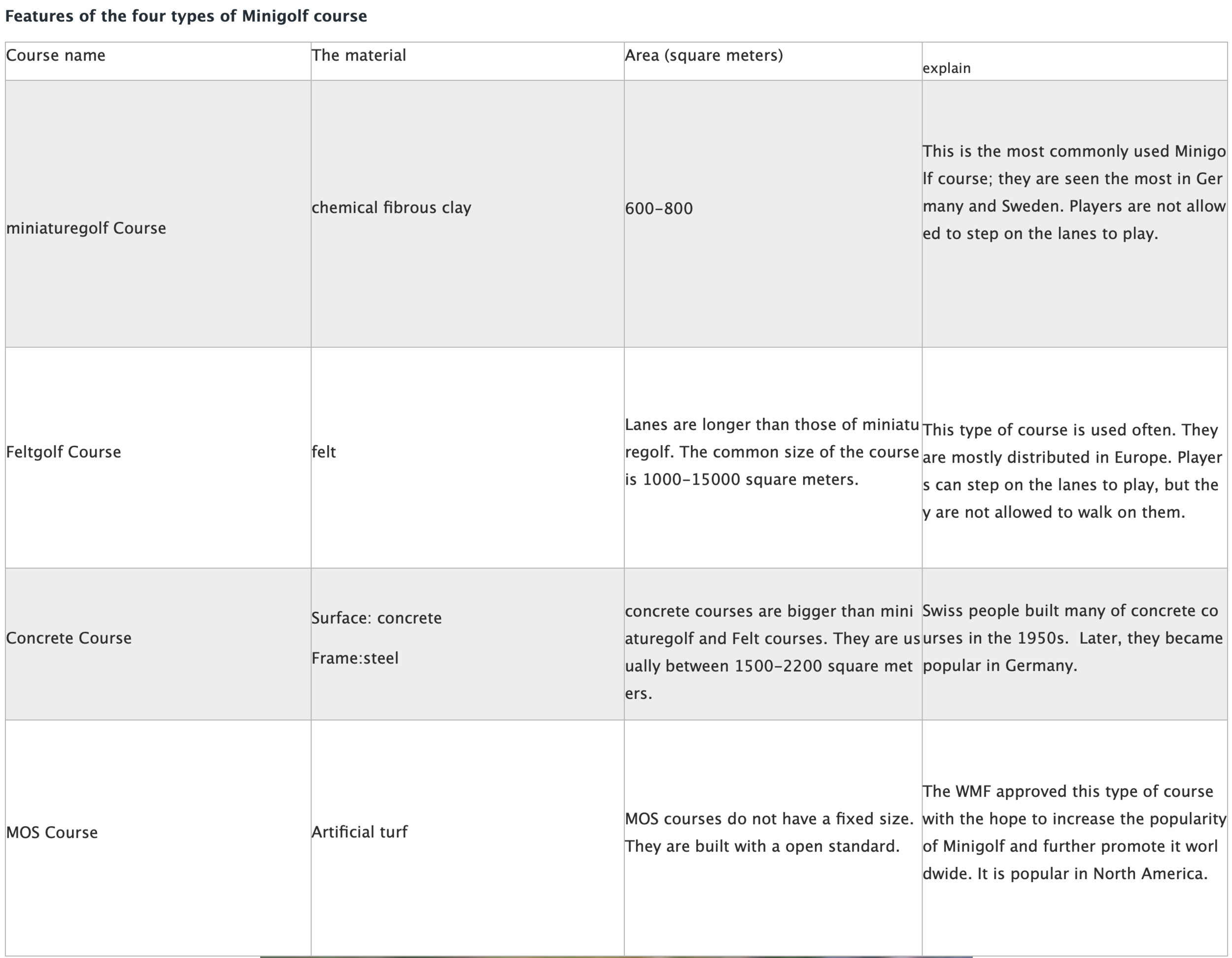









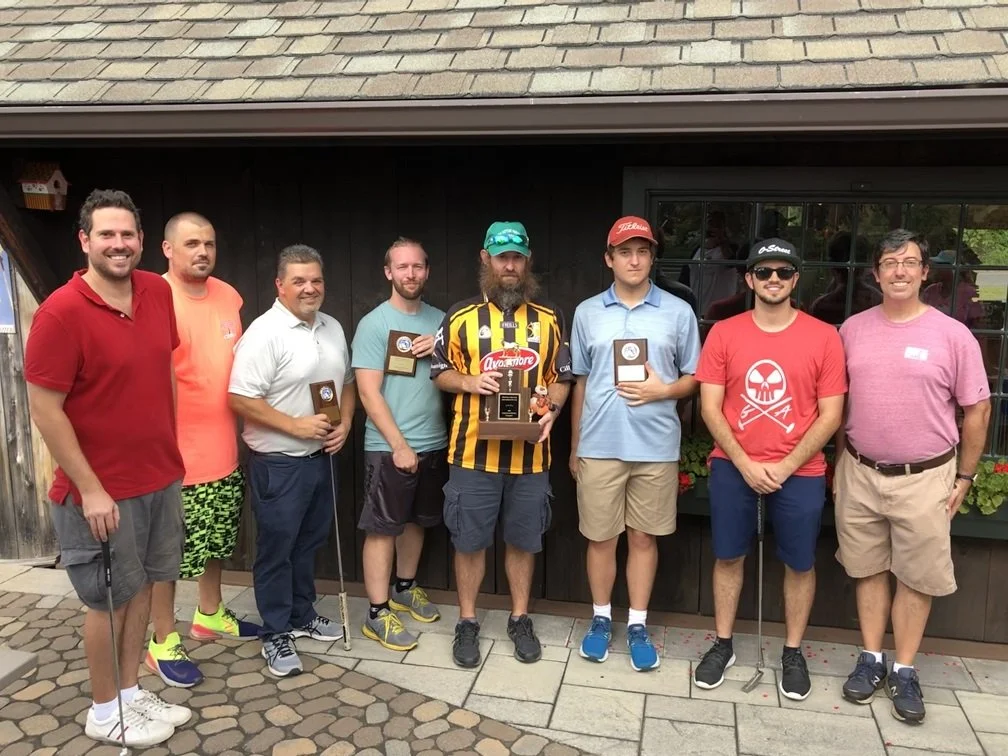
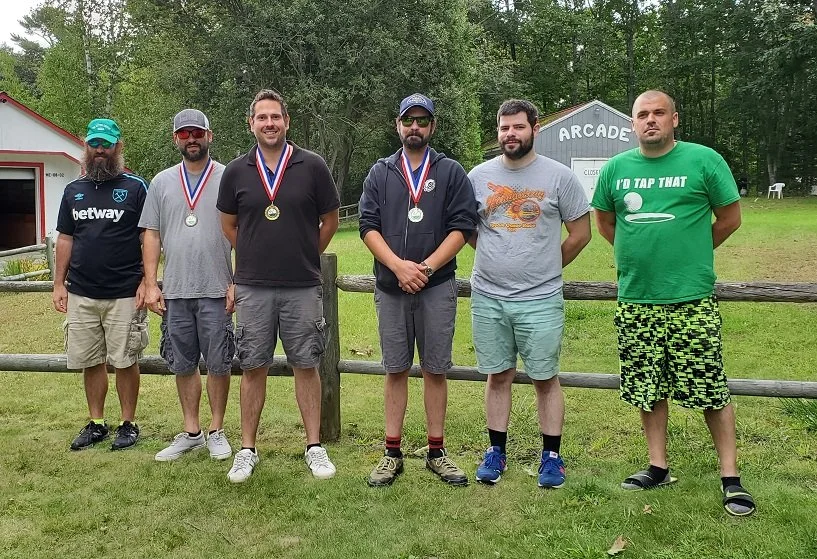
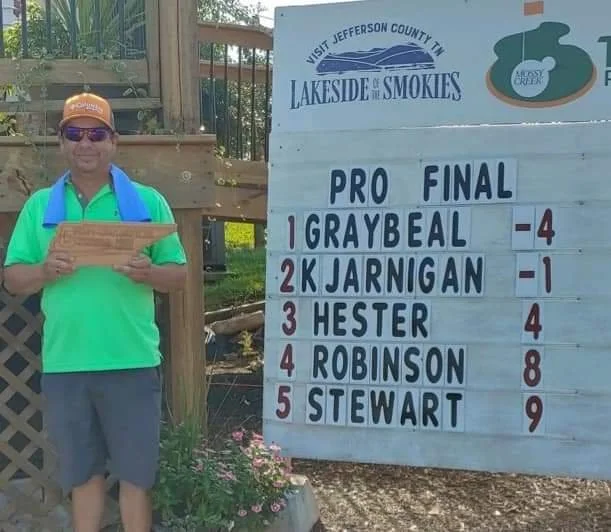

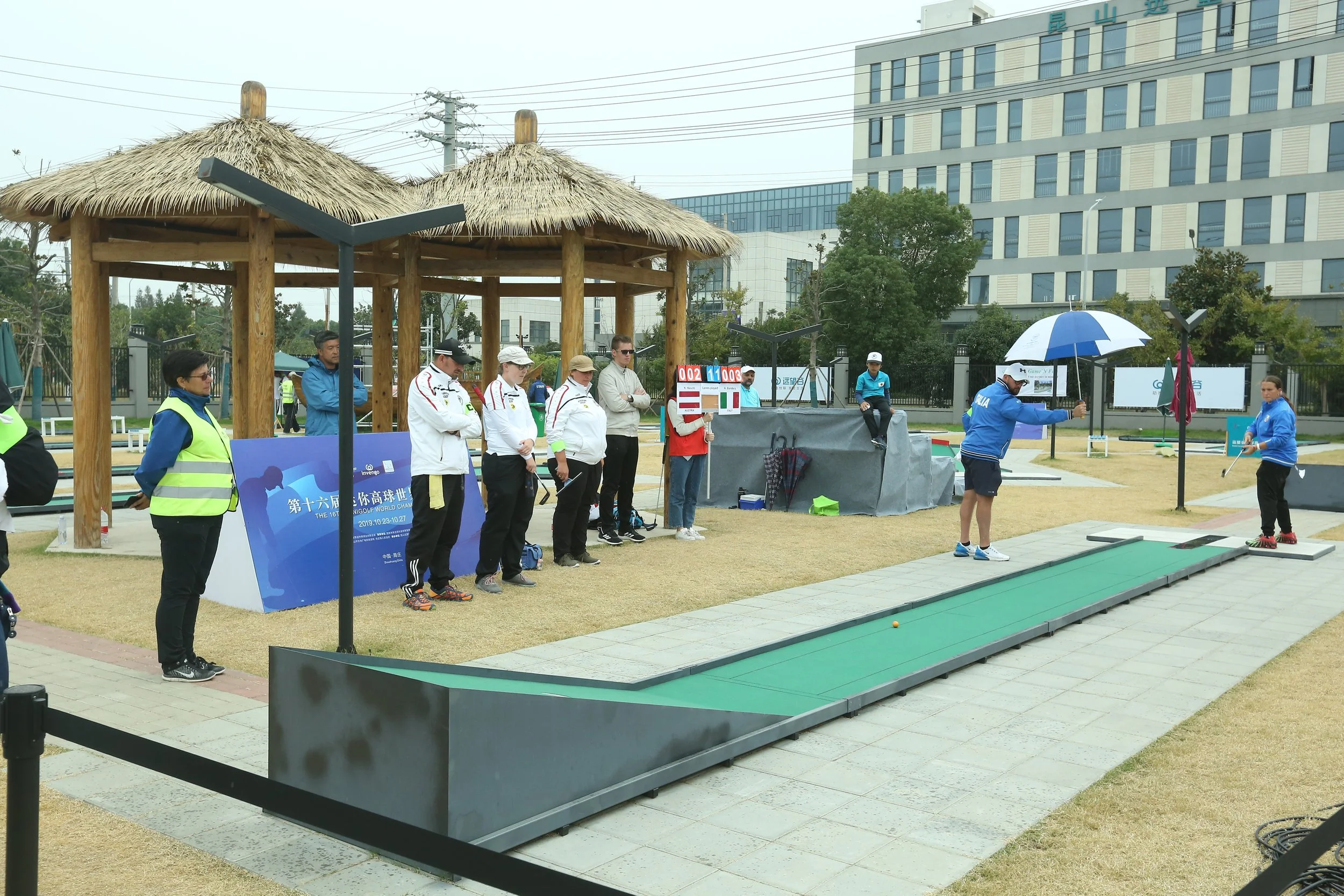

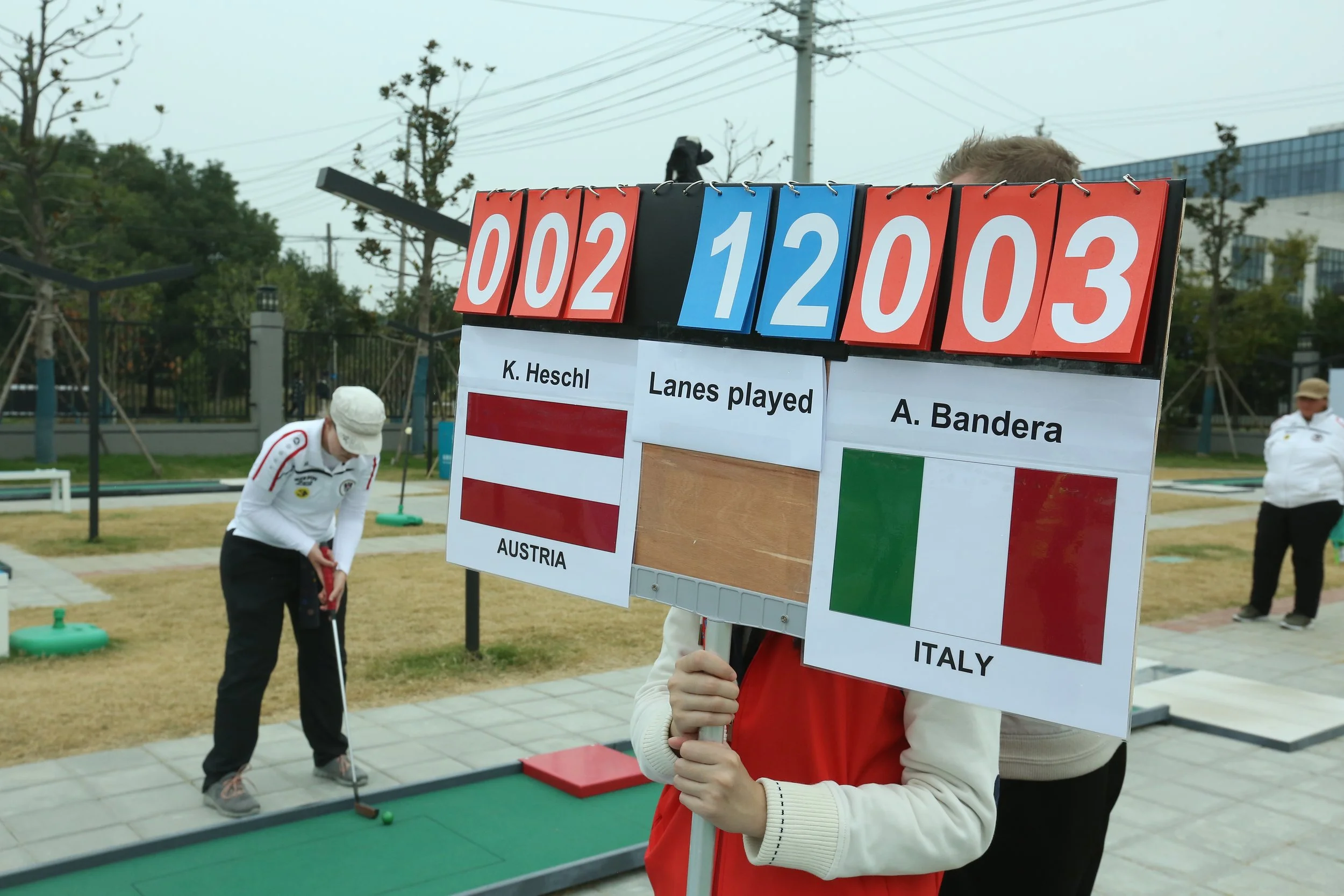

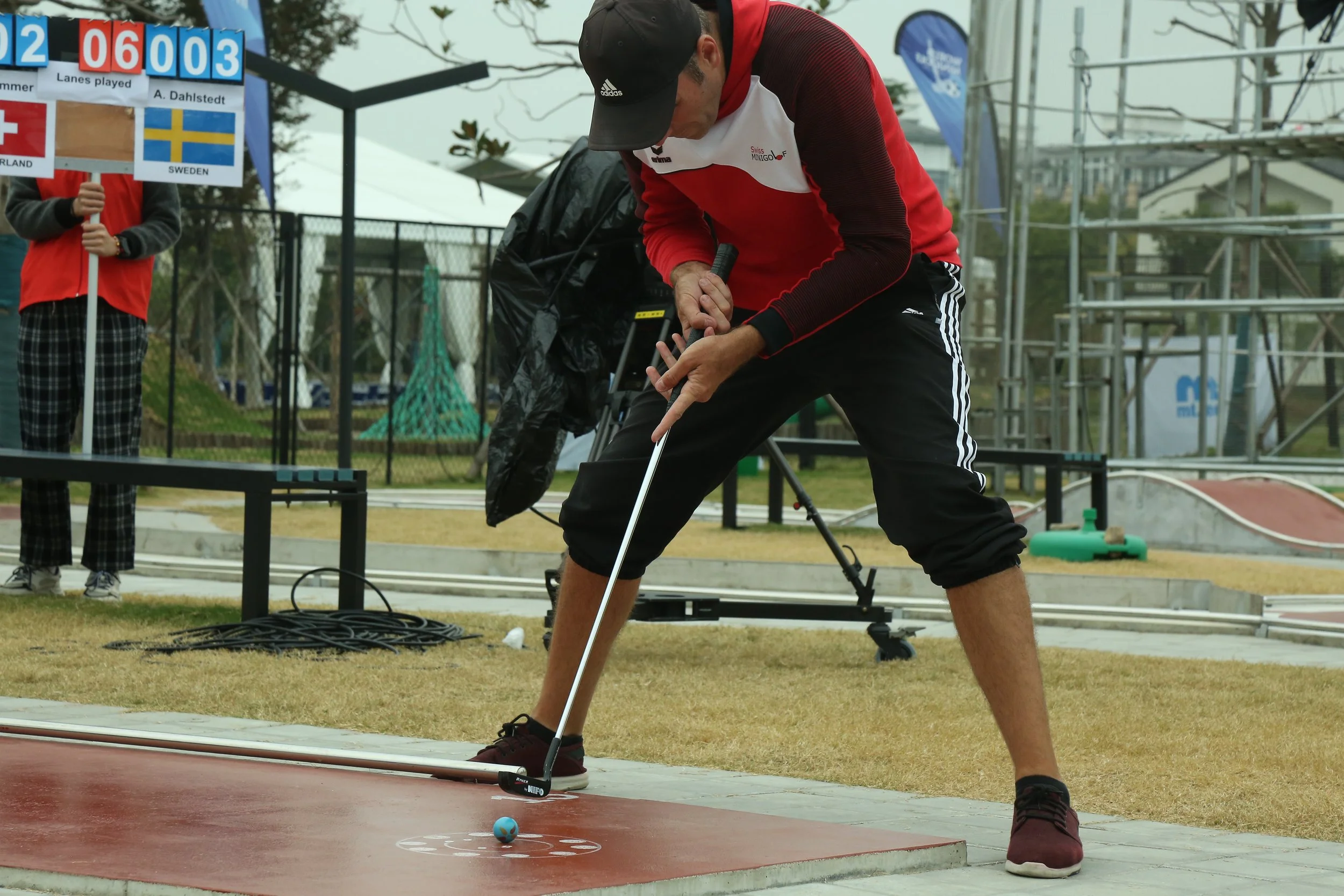
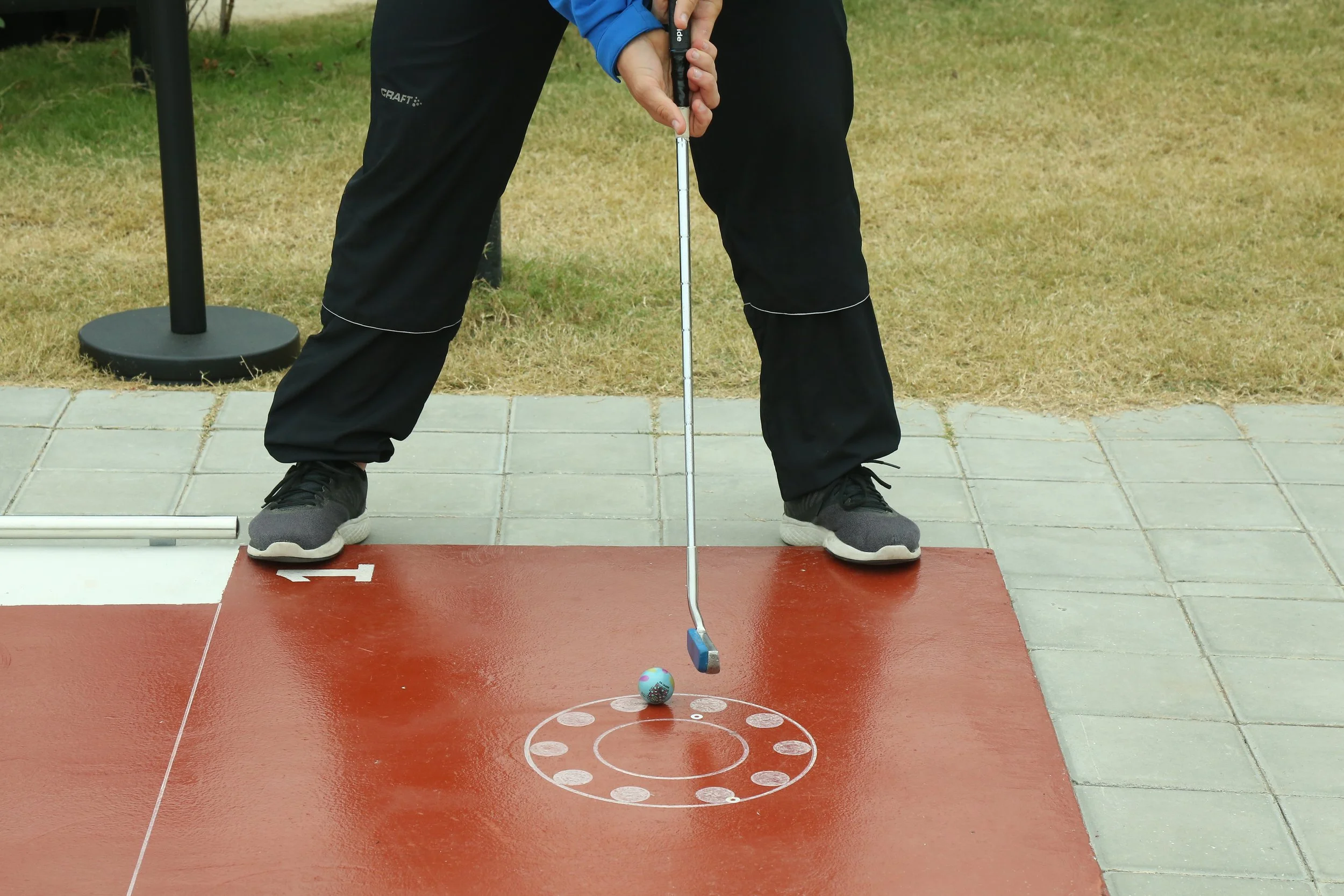
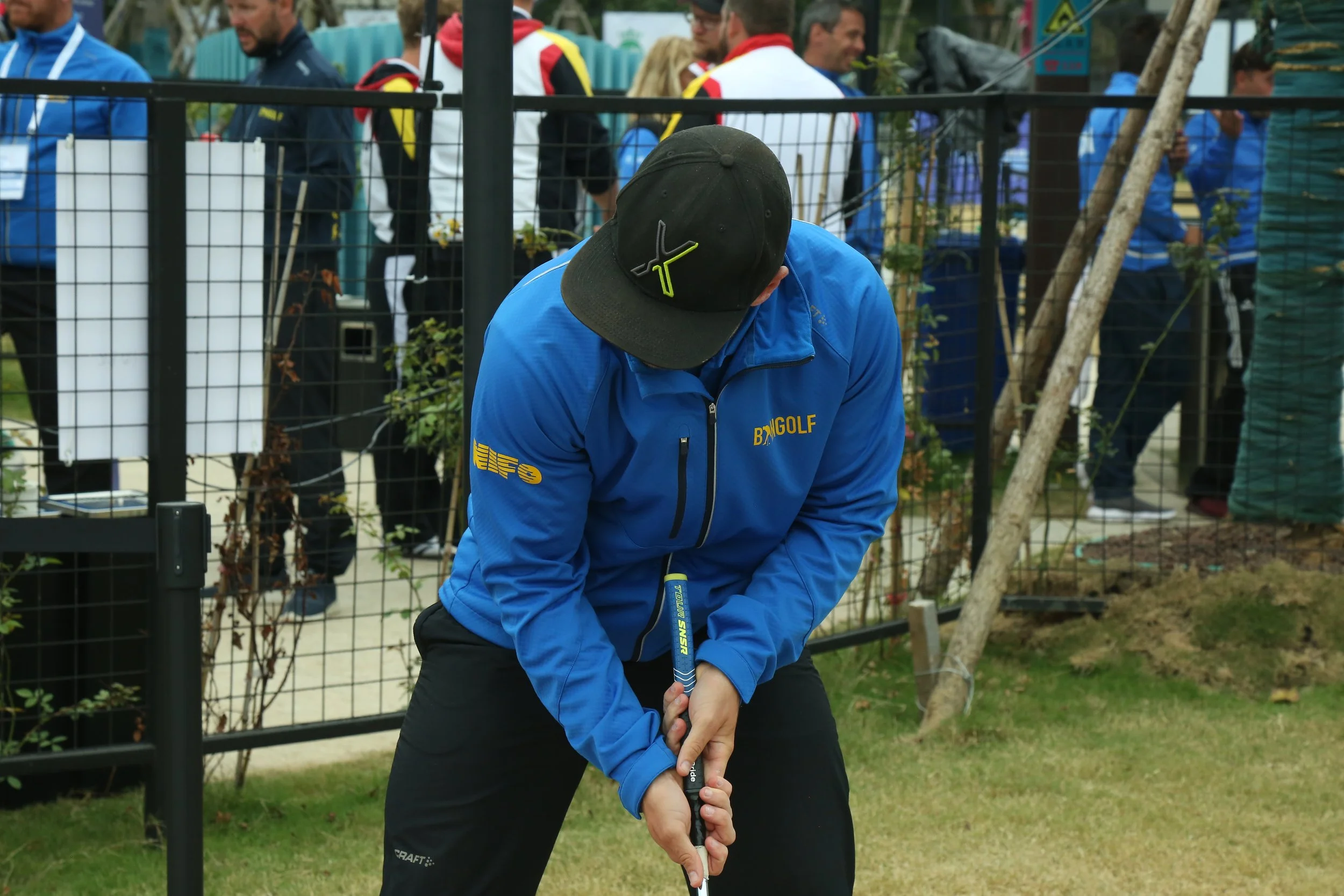

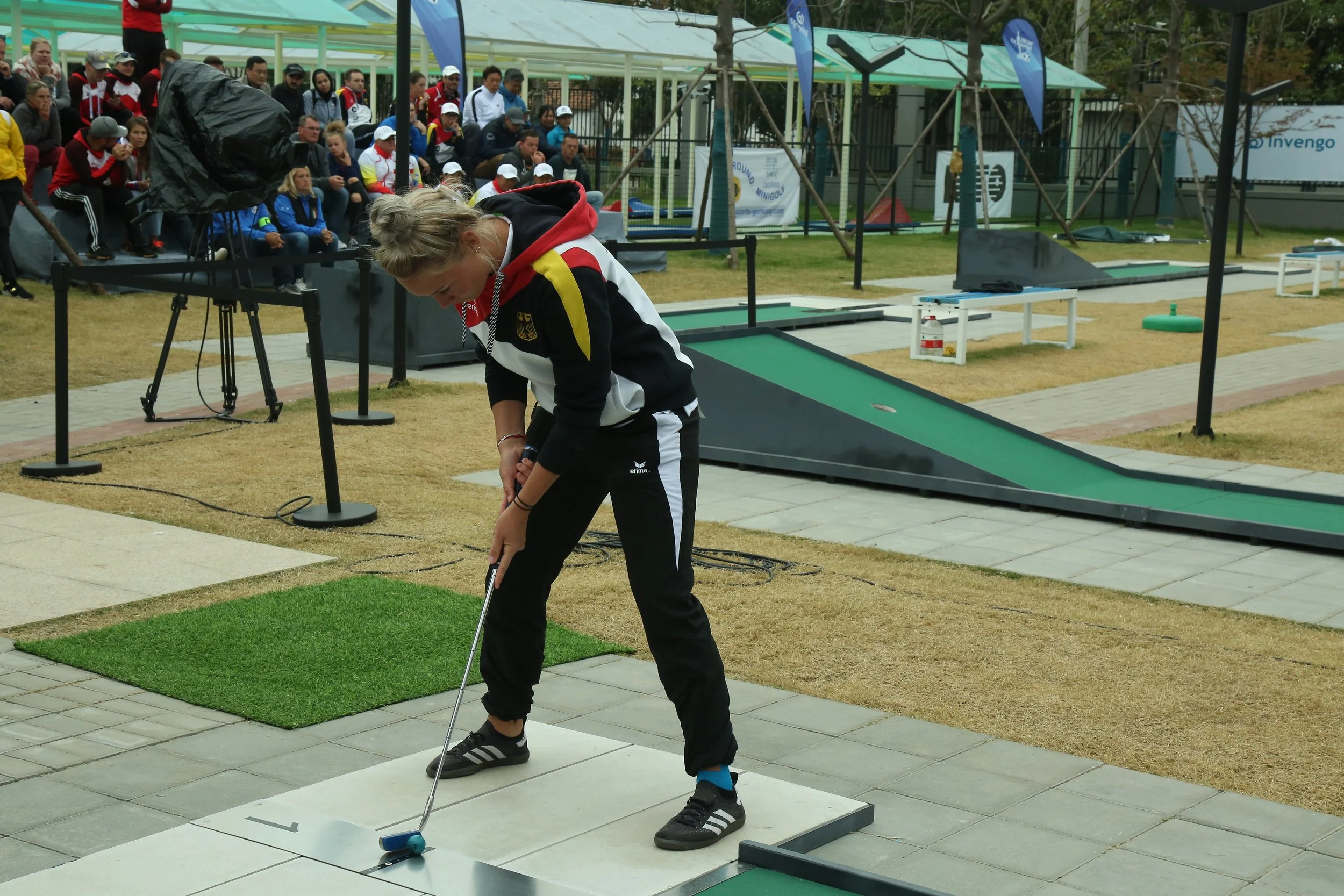
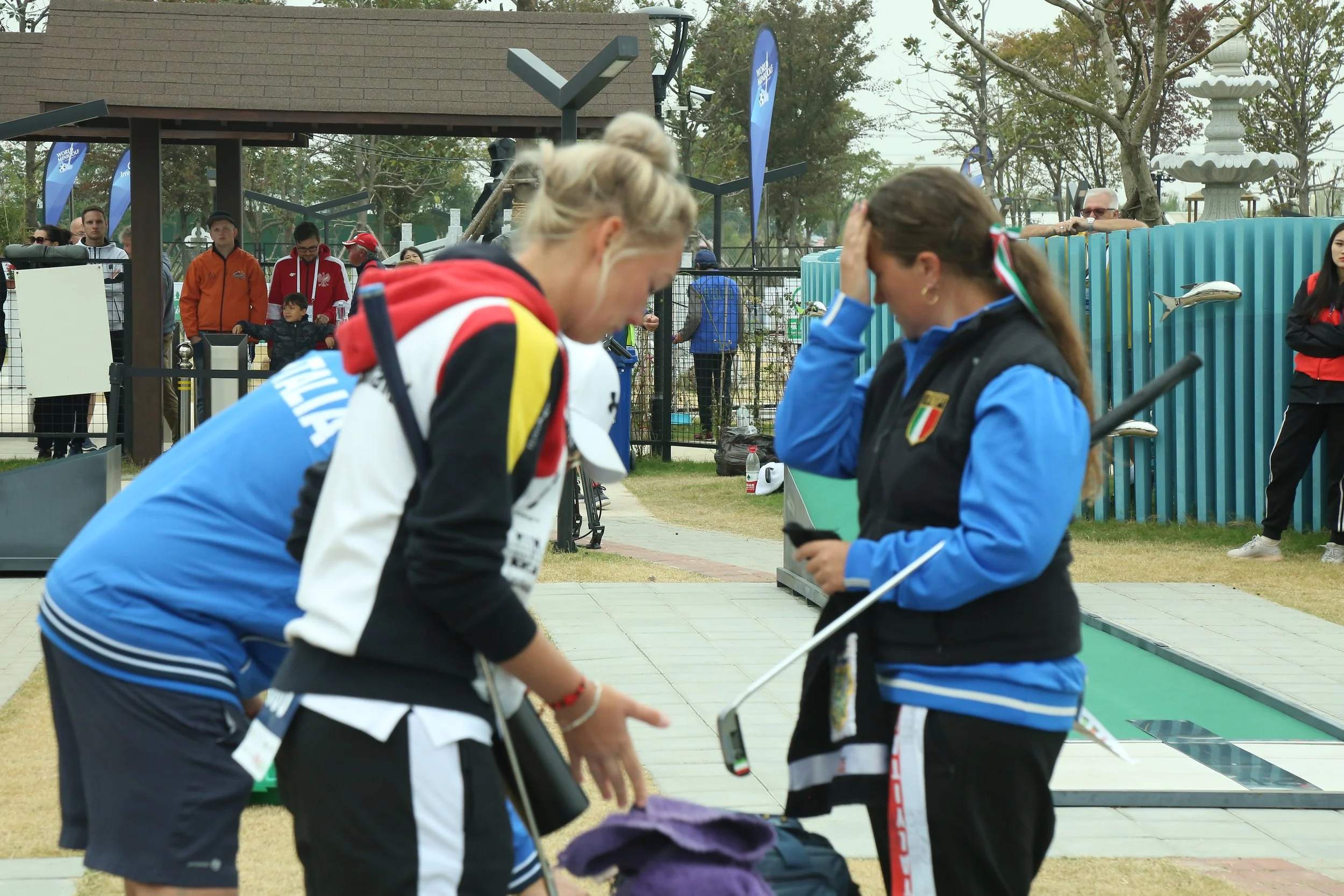
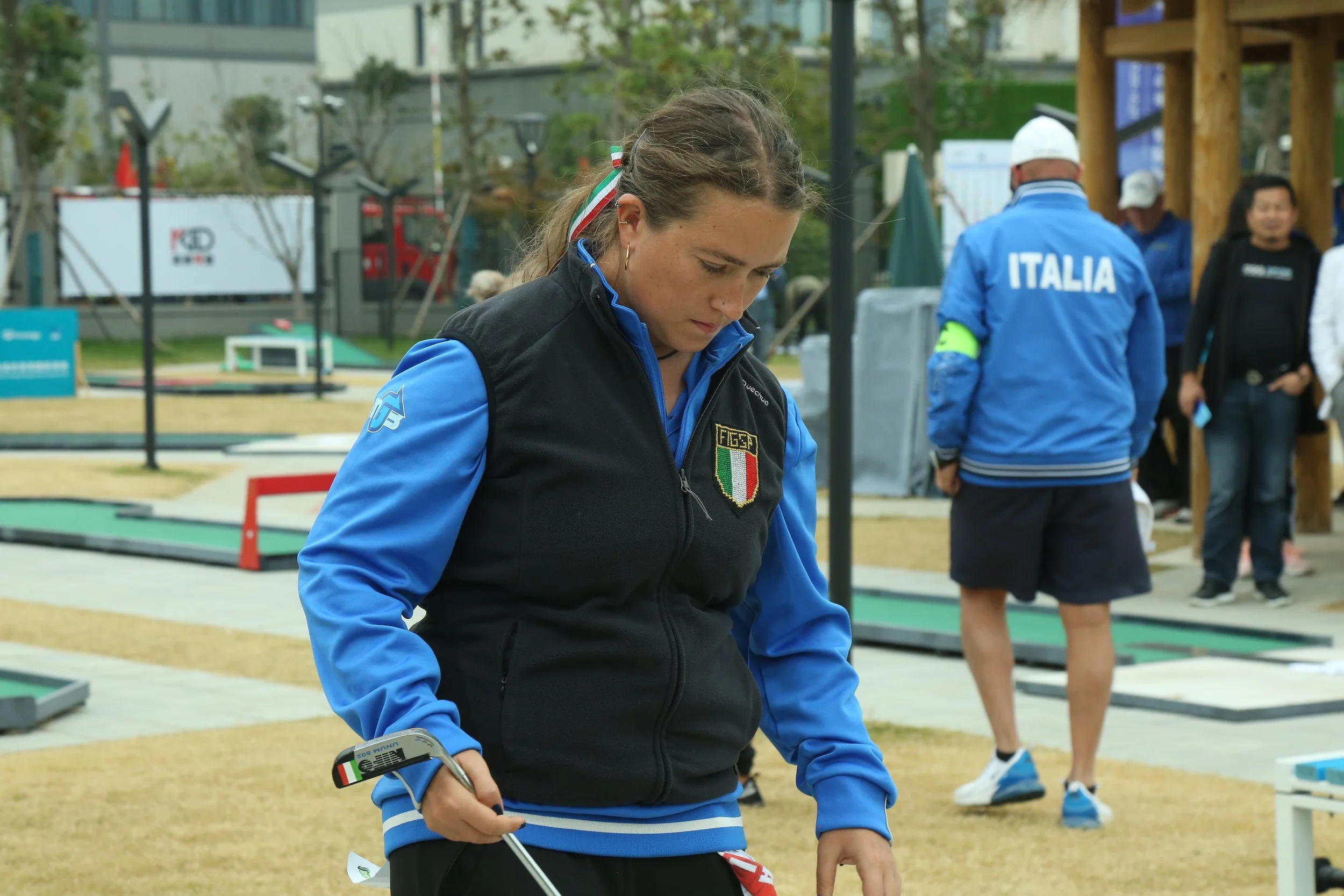
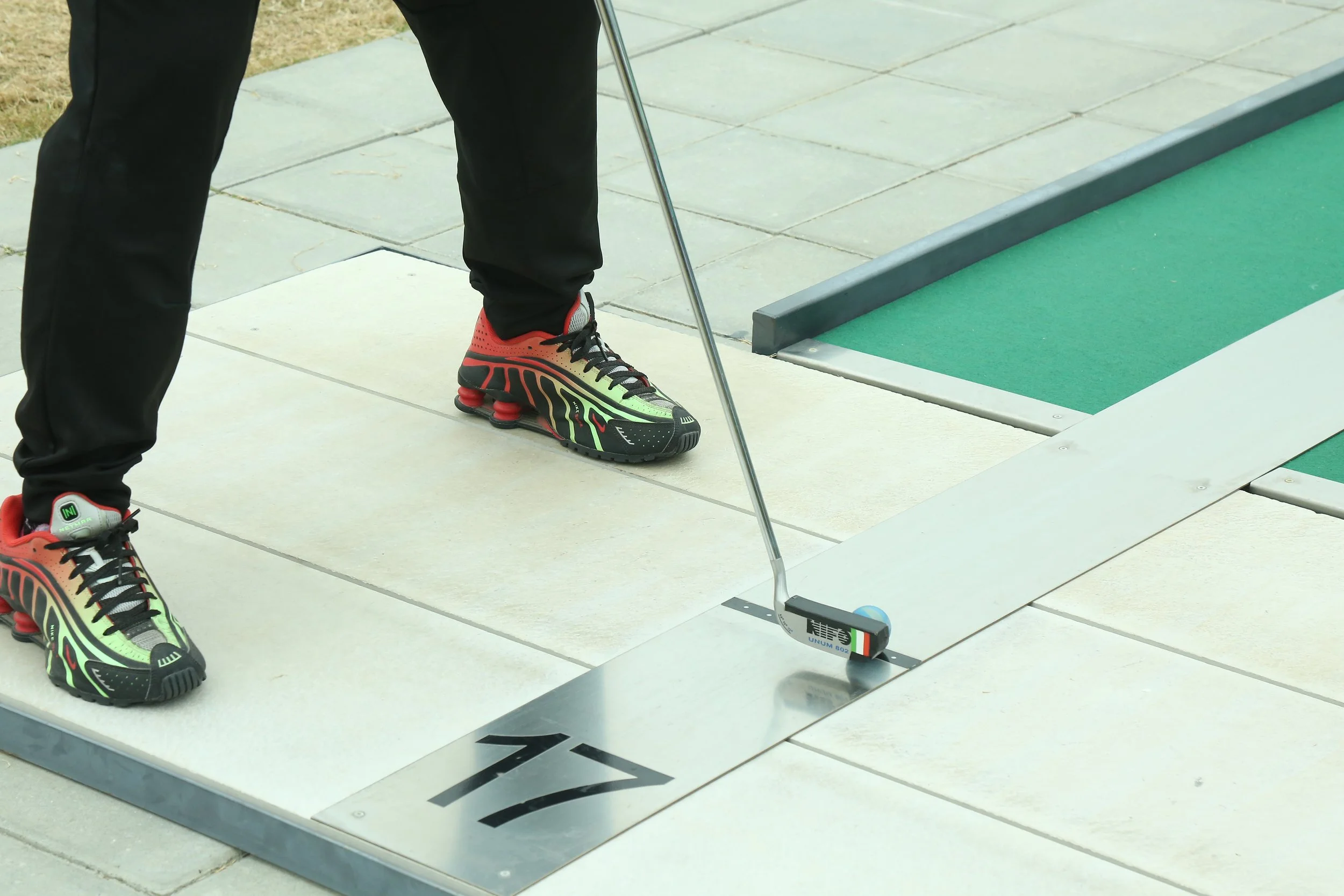
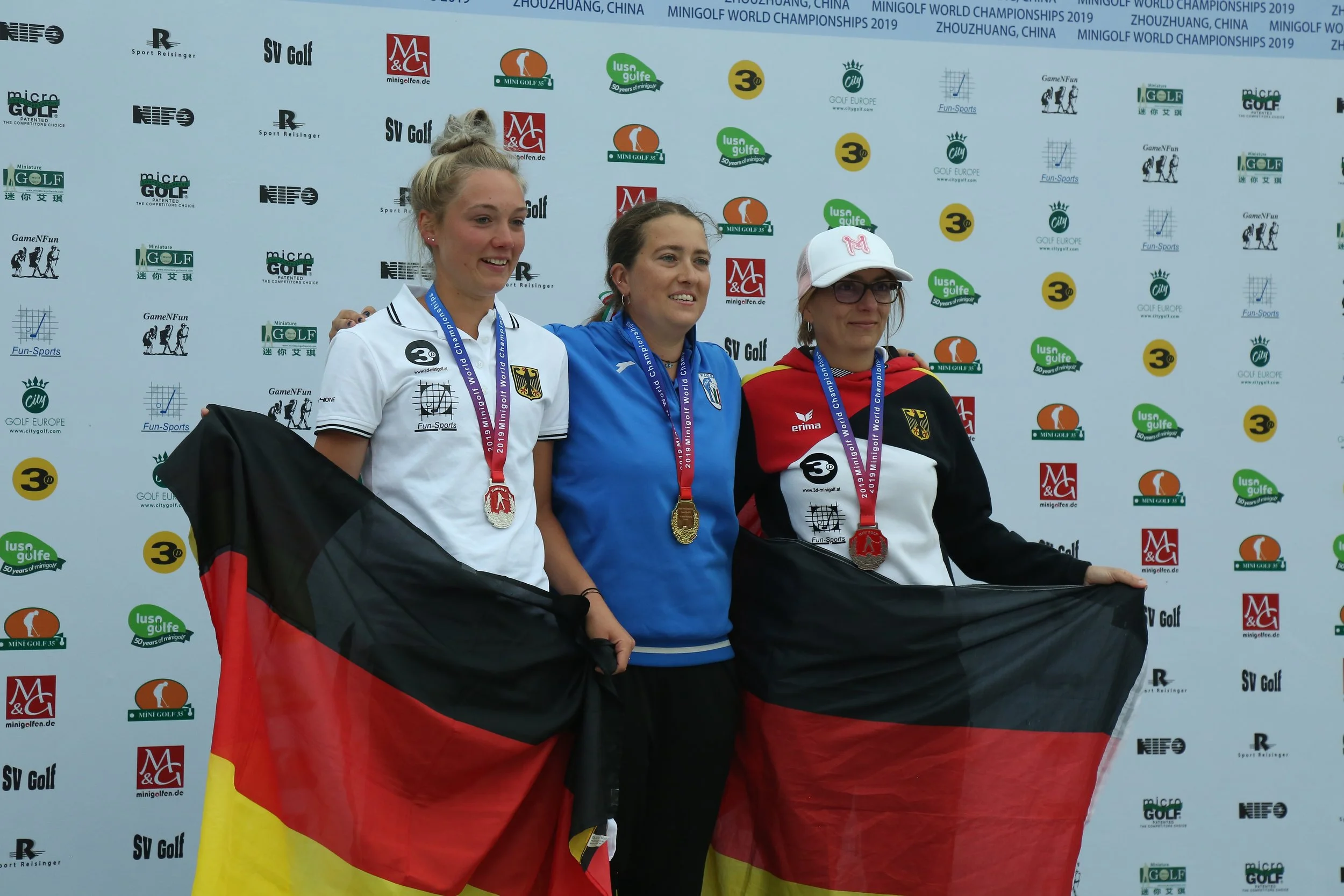


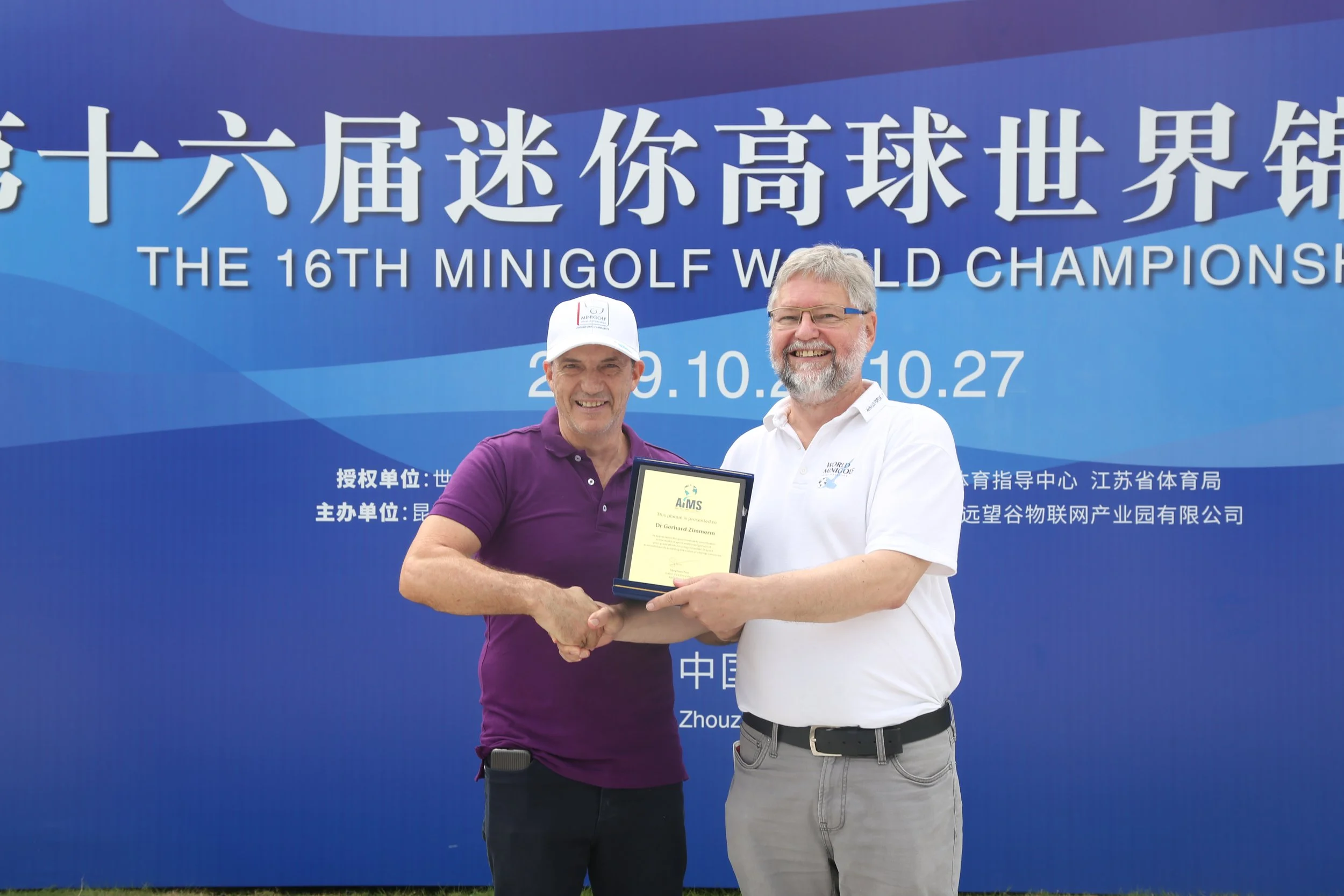

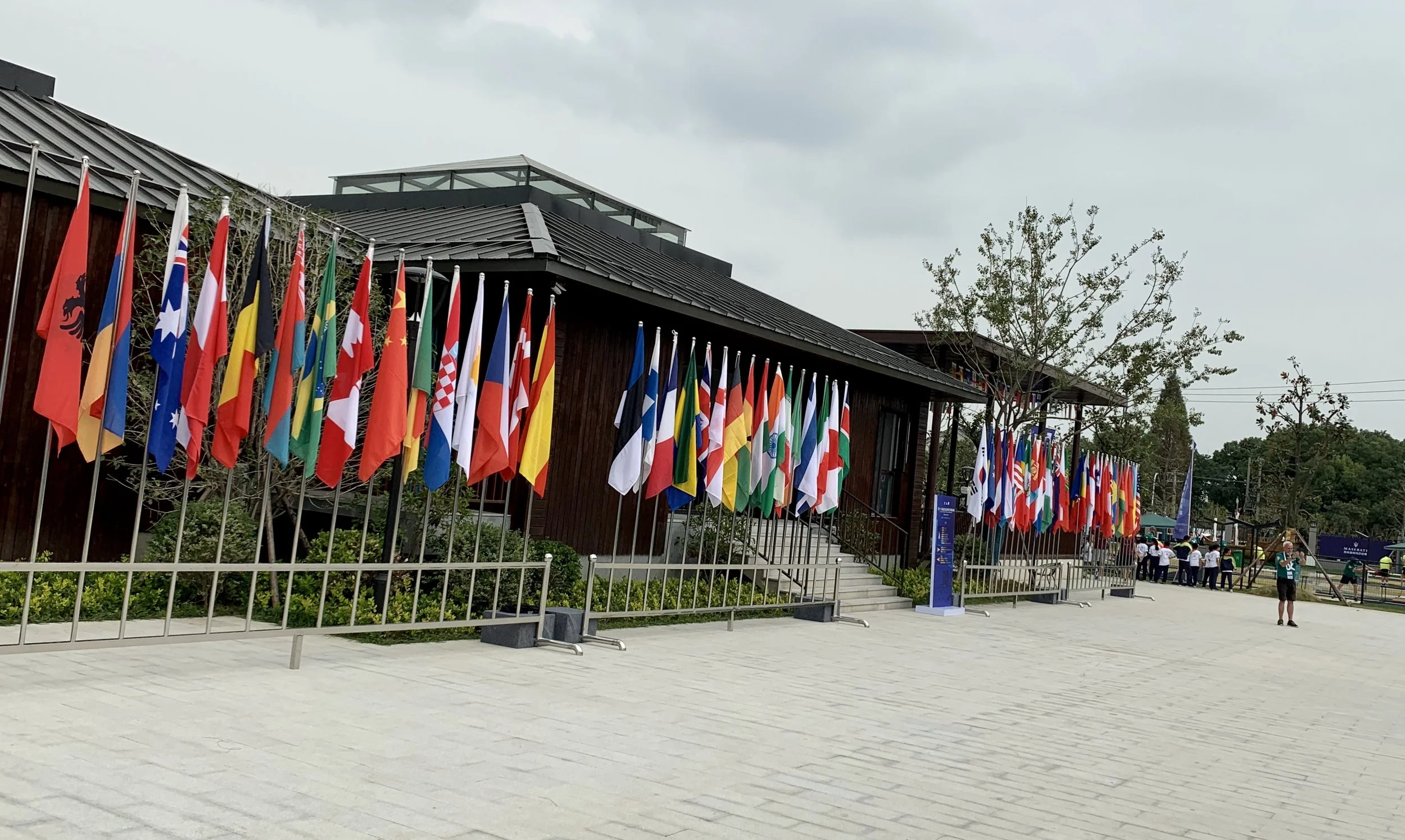
On November 23-24, 2024, the First China Minigolf League successfully concluded at the Zhouzhuang Invengo Minigolf International Course in Kunshan, Jiangsu Province. The event attracted nearly 20 high-level teams, with over 100 Minigolf elite players participating from various regions including Beijing, Shanghai, Shanxi, and Guangxi, showcasing a spectacular display of skill and competition in Minigolf.